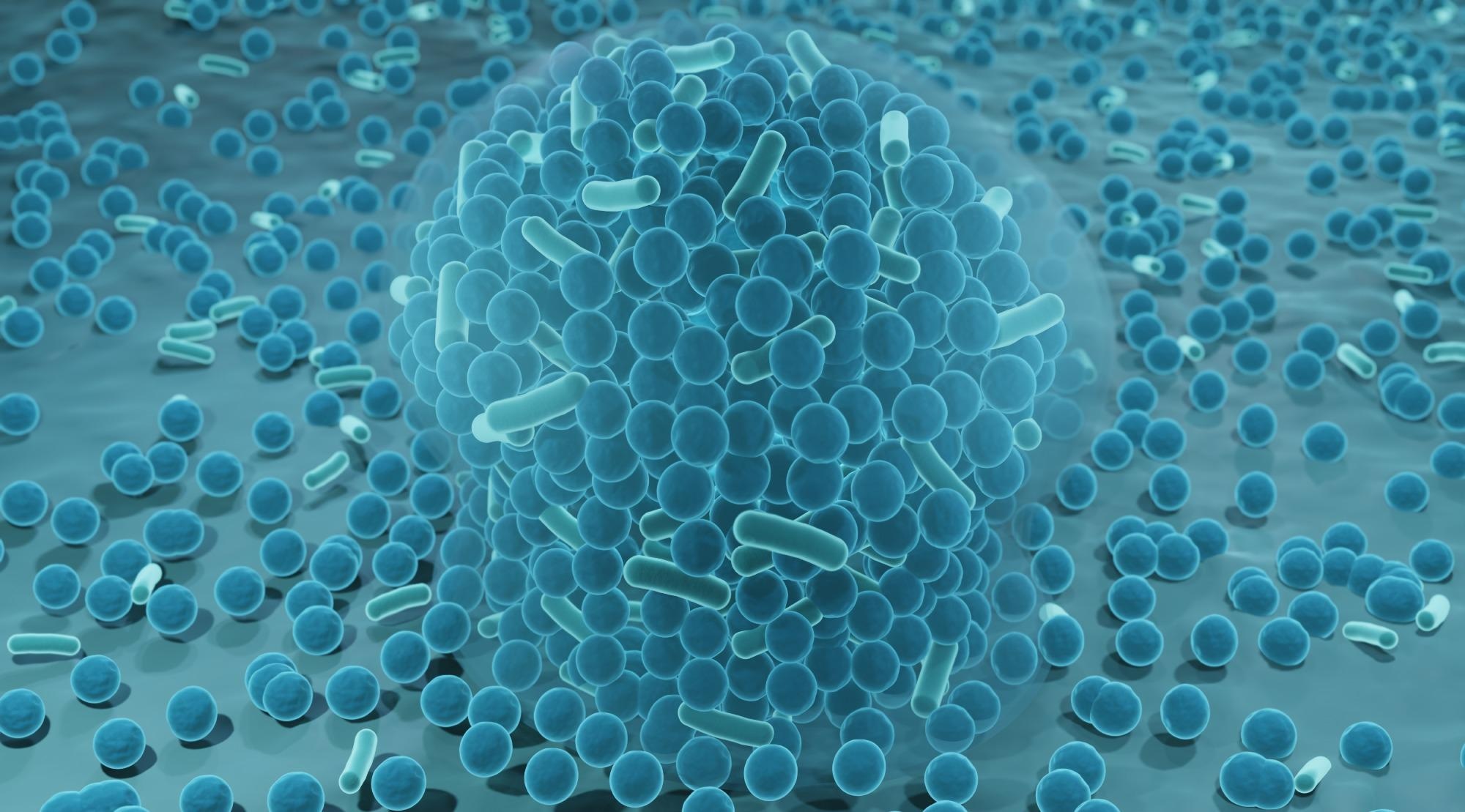A team of researchers from the United States and the Netherlands has used 3D printing to manufacture E. coli (Escherichia coli) biofilms that are resistant to infection.

Image Credit: Shutterstock.com/ ART-ur
These biofilms also possess unique structural properties allowing them to retain their structure and shape under physical distortion. This paves the way for novel applications in medicine, environmental remediation and others.
The Nature of Biofilms
Biofilms are 3D structures of bacteria embedded in a self-generated extracellular matrix (ECM). This matrix is composed of extracellular DNA (eDNA), proteins, polysaccharides and lipids. Biofilms are found in both natural and industrial environments.
In industry, they facilitate sustainable processes such as bioremediation, materials synthesis or toxin degradation. In hospitals and clinics, however, they become the source of infections on prostheses, catheters, sutures, dentures and other implants.
Biofilms display unique biological and mechanical properties that individual (planktonic) bacteria do not. They strongly attach to biotic or abiotic surfaces, for example, or show increased rates of extracellular polymeric substances (EPS) production.
As such, they are highly resilient and adaptable in the presence of altered pH and osmolarity, nutrient scarcity, mechanical and shear forces. They show resistance to disinfectants, solvents, detergents and high temperatures.
There are several reasons behind these novel biological and mechanical characteristics. These include the structure of the biofilm itself, availability of oxygen and nutrients and exchanges between different ECM components.
The structural (composition, structure, spatial organization, architecture) and mechanical properties (cohesiveness, viscoelasticity, resistance to shear, stiffness) of biofilms have been of considerable interest to researchers.
The team of researchers was led by Dr. Marie-Eve Aubin-Tam at Delft University of Technology in the Netherlands and Dr. Anne Meyer at the University of Rochester in the United States. They grew their biofilm sample from E. coli bacteria.
Escherichia coli is a Gram-negative, facultative anaerobic bacterium. It is commonly found in the intestinal tract of warm-blooded organisms (endotherms). As a facultative anaerobic, it is a versatile organism that can generate energy either in the presence or absence of oxygen. E. coli is a widely studied model organism that has, for example, been used in recombinant DNA studies. It can be cultured in as little as 20 minutes.
The ECM of E.coli biofilms is composed of curli fibers (a proteinaceous component) or cellulose (a polysaccharide component), or a combination of both, and 3D printing is a novel technique for manipulating the structural and mechanical properties of such biofilms.
3D-Printed Biofilms
The unique properties of biofilms are attributed to the existence of extracellular-matrix (ECM) components and their spatial structuring. This spatial structuring is controlled by factors such as ECM composition and bacterial density. These affect the allocation of molecular oxygen spawning novel mechanical and biological properties.
Up until recently, it has not been possible to individually modulate these variables to study their effects on the biofilm’s properties. The challenge lies in producing a top-down spatial patterning of the biofilm components.
In 3D printing (also known as additive manufacturing), layers of material are deposited sequentially to form the desired shape. Aside from manufacturing industrial components, it has been used to “print” biological materials such as algae, fungi, bacteria and yeast.
3D printing allows for the spatial patterning of constituents that mimic complex 3D nano environments, as well as their time-evolving features.
The multidisciplinary team used a “home-built” 3D printer to shape arbitrary four-layer patterns of biofilm-forming E. coli onto an agar substrate. Different combinations of E. coli, cellulose and curli showed that the spatial heterogeneity and mechanical robustness of the biofilm could be modulated to a high degree of precision in shape, design and resolution.
The team’s 3D-printed biofilm displayed resistance to common laboratory disinfectants, including ethanol. They showed that they could alter the densities in bacteria, curli or cellulose via the design of the bioink (the material used to “print” the biofilm). This had significantly affected the development of resistance to disinfectants.
Furthermore, the team’s 3D-printed biofilms retained their shapes and displayed an extraordinary resistance to physical distortion. This means these “prints” can be reversibly attached to surfaces such as bacterial cellulose, glass and polystyrene.
These 3D-printed biofilms can potentially be applied in probiotic biofilm coatings on medical devices, wastewater treatment, environmental remediation and others. This paves the way for next-generation smart materials which combine biological and materials sciences.
References and Further Reading
Balasubramanian, S., Et. Al., (2021) Emergent Biological Endurance Depends on Extracellular Matrix Composition of Three-Dimensionally Printed Escherichia coli Biofilms. ACS Synthetic Biology, [online] Available at: https://doi.org/10.1021/acssynbio.1c00290
Disclaimer: The views expressed here are those of the author expressed in their private capacity and do not necessarily represent the views of AZoM.com Limited T/A AZoNetwork the owner and operator of this website. This disclaimer forms part of the Terms and conditions of use of this website.